Abstract
Craighead, J. E. (Harvard Medical School, Boston, Mass.). Growth of Myxovirus parainfluenza type 3 in organ cultures of guinea pig tissue. J. Bacteriol. 92:751–761. 1966.—Organ cultures of adult guinea pig nasal mucosa, lung, and pleura were infected with Myxovirus parainfluenza type 3. Observations were made on the growth of virus at intervals after inoculation. An inoculum of 102.5 tissue culture infectious doses (tcid50) initiated infection in each of the tissues. Cultures of nasal mucosa yielded up to 106.0tcid50 per 6 hr for periods of as long as 2 weeks. Virus production was not affected by the “immune” status of the animal used as a source of tissue. Introduction of antiserum into the medium appeared to suppress virus release but failed to “cure” the infection. Interferon was not detected in fluids bathing the nasal mucosa. Cultured fragments of lung produced virus for 28 days after inoculation. As much as 105.0tcid50 per 6 hr was released by the tissue. Pleural mesothelial cells lining the diaphragm yielded up to 106.0tcid50 per 6 hr over a 14-day period. Histological sections showed that the tissues retained differentiated morphological features during maintenance in vitro. Cytological changes unequivocally associated with infection were not recognized. The techniques described give reproducible, quantitative results. Organ cultures are feasible for the study of virus growth and cytopathology in differentiated tissues.
Full text
PDF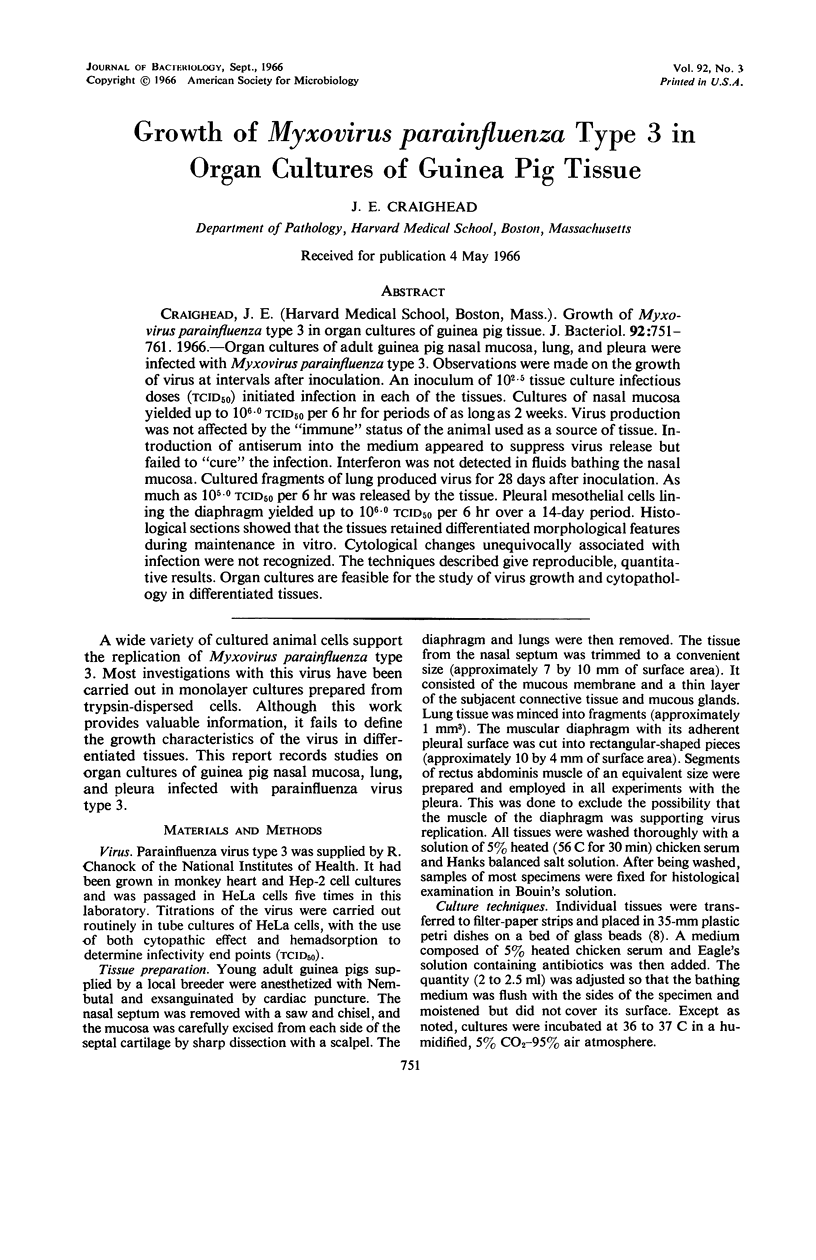
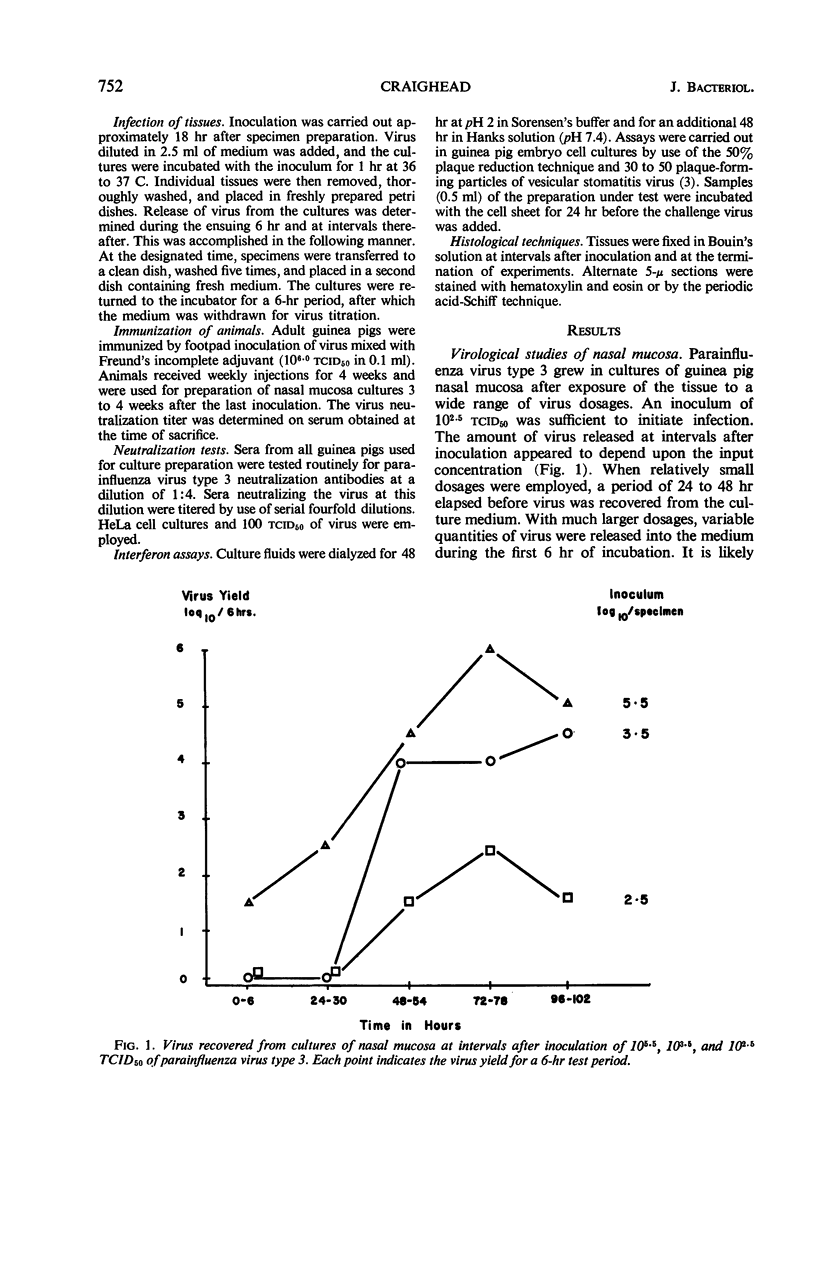
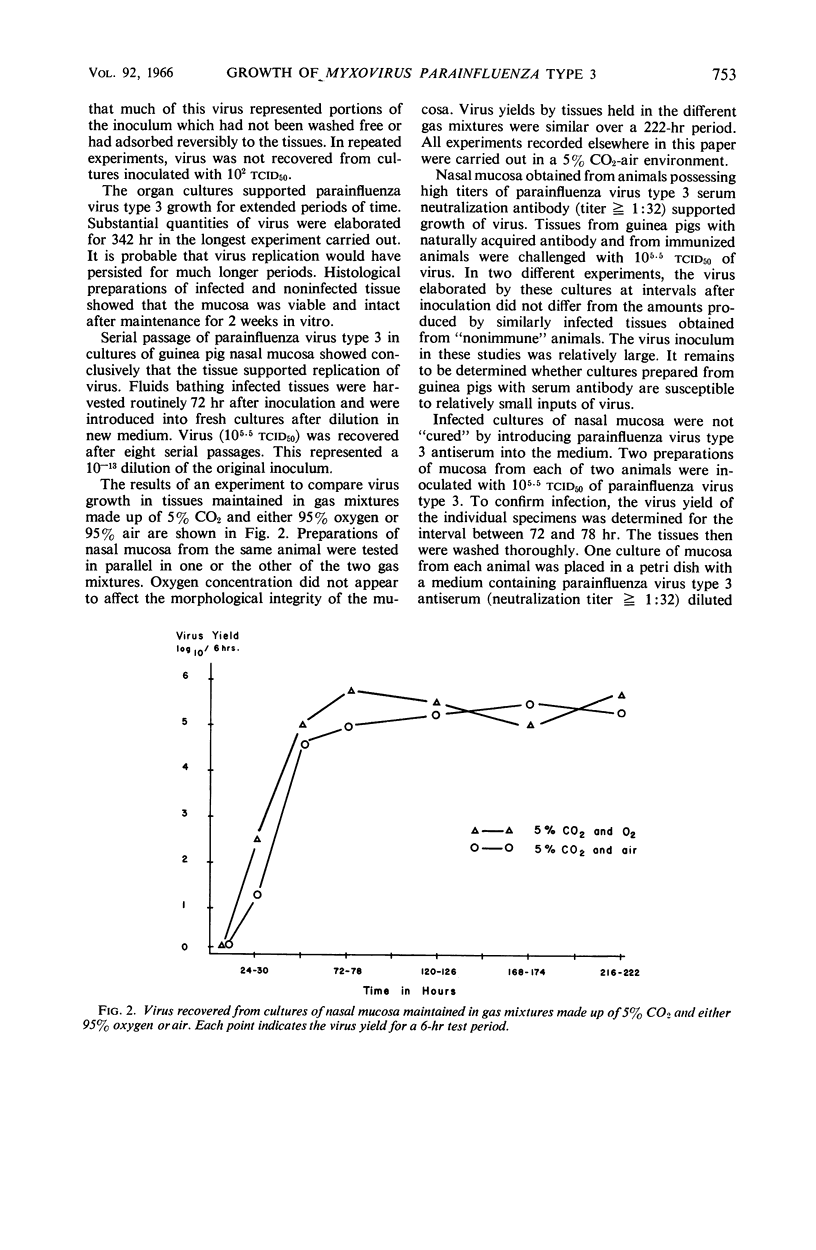
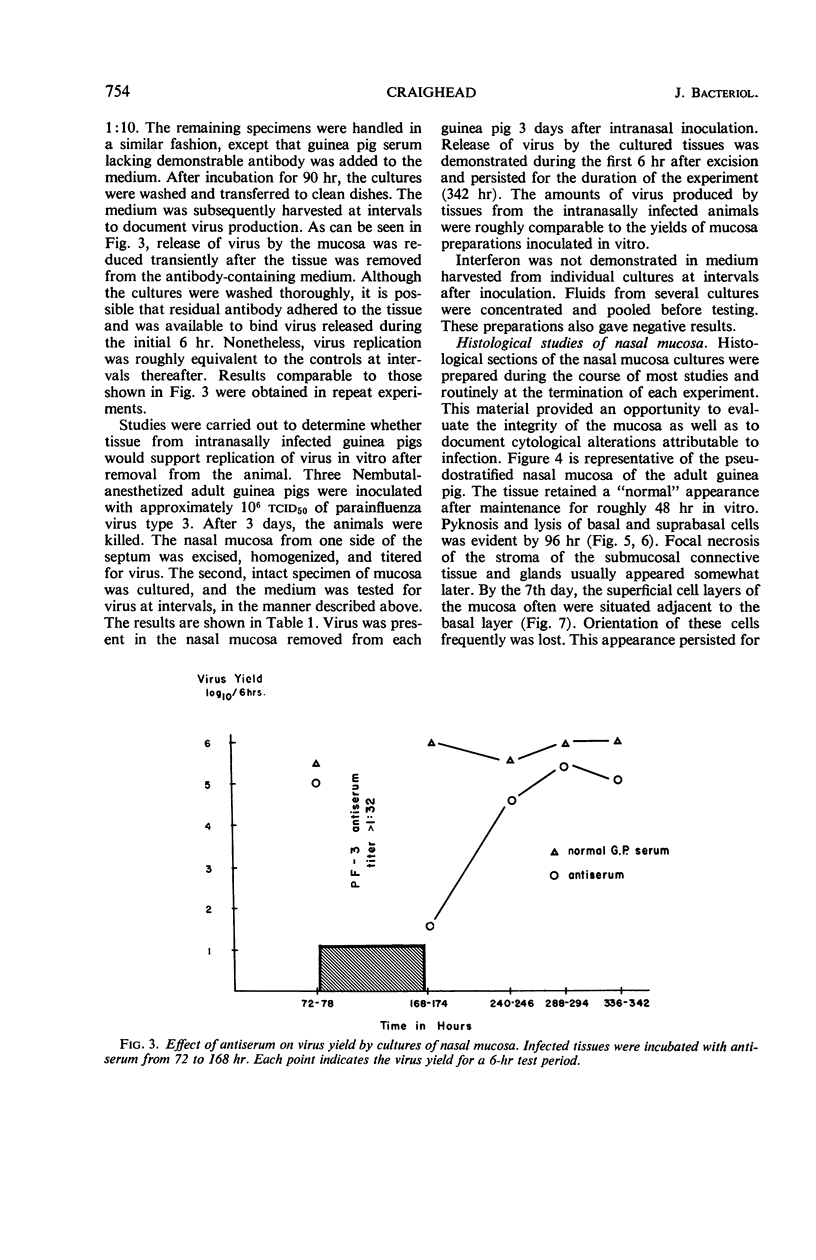
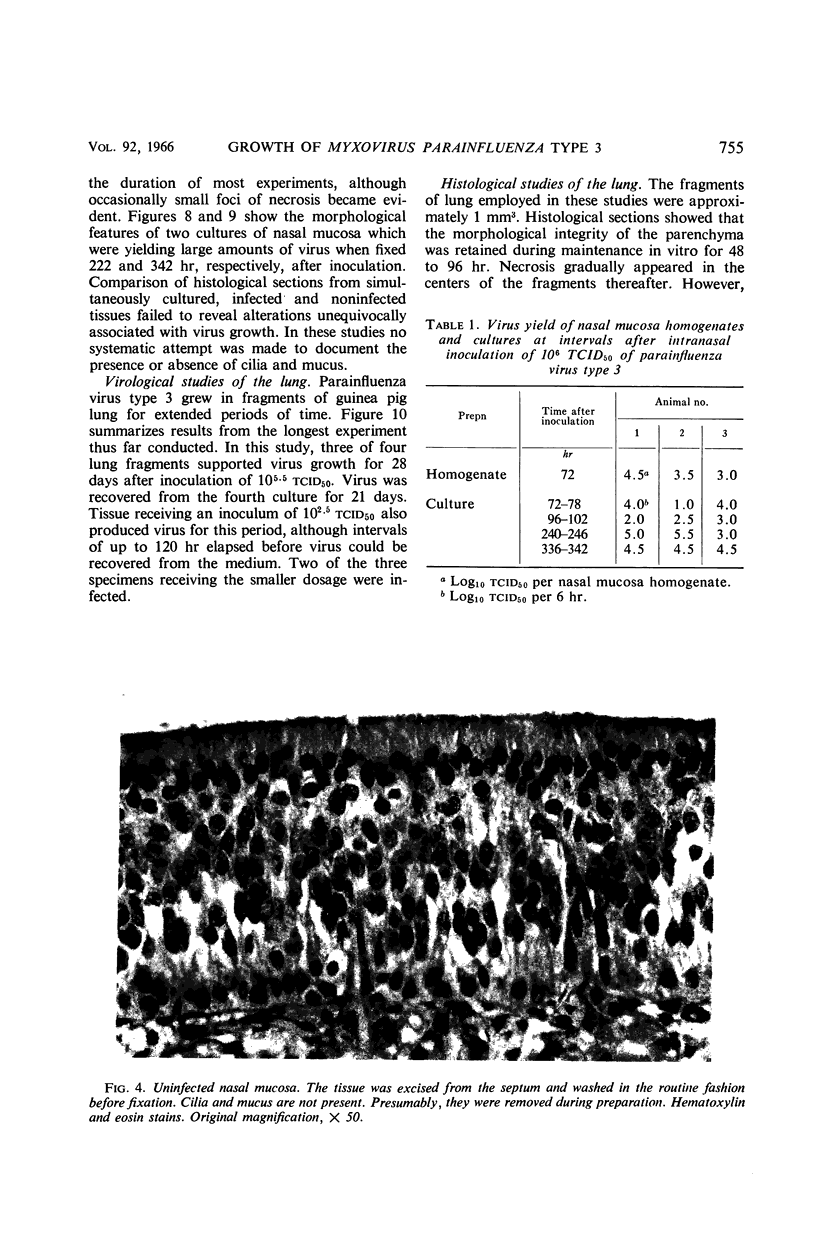
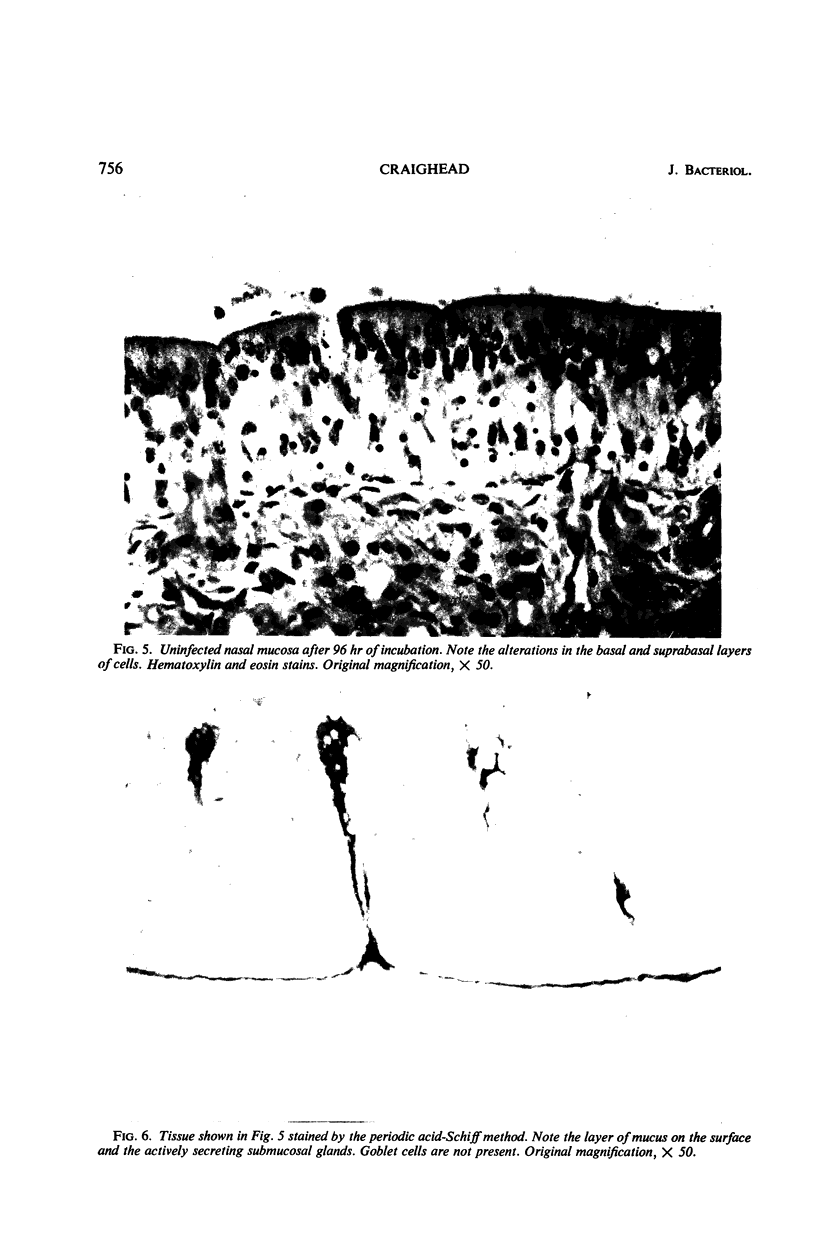
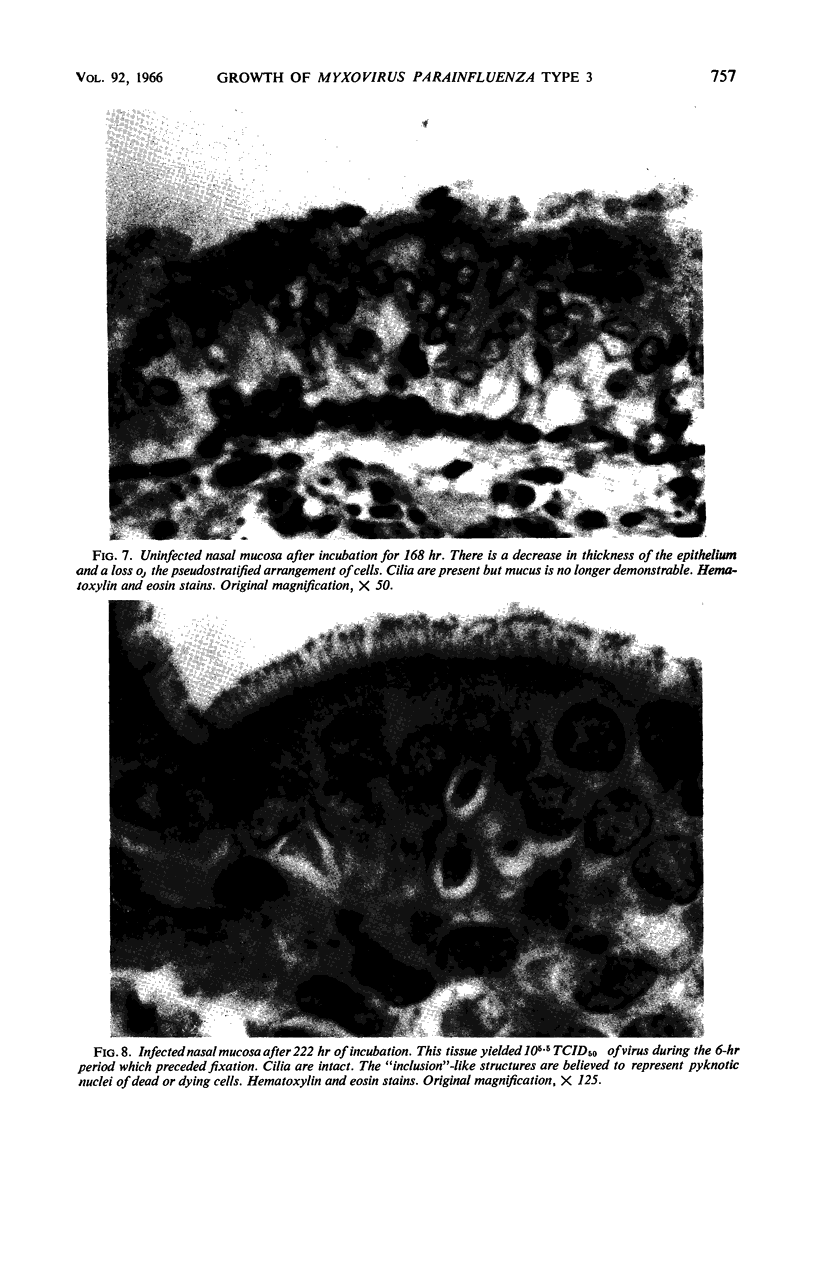
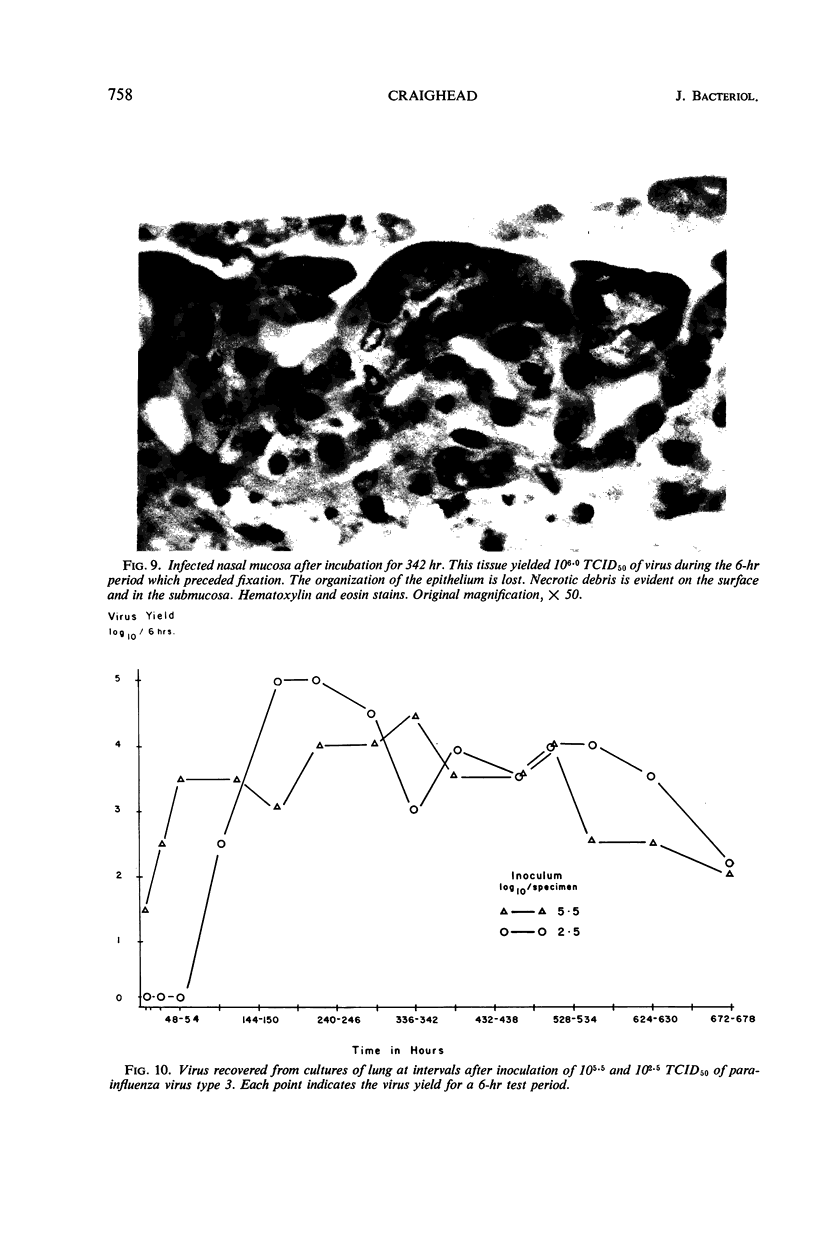
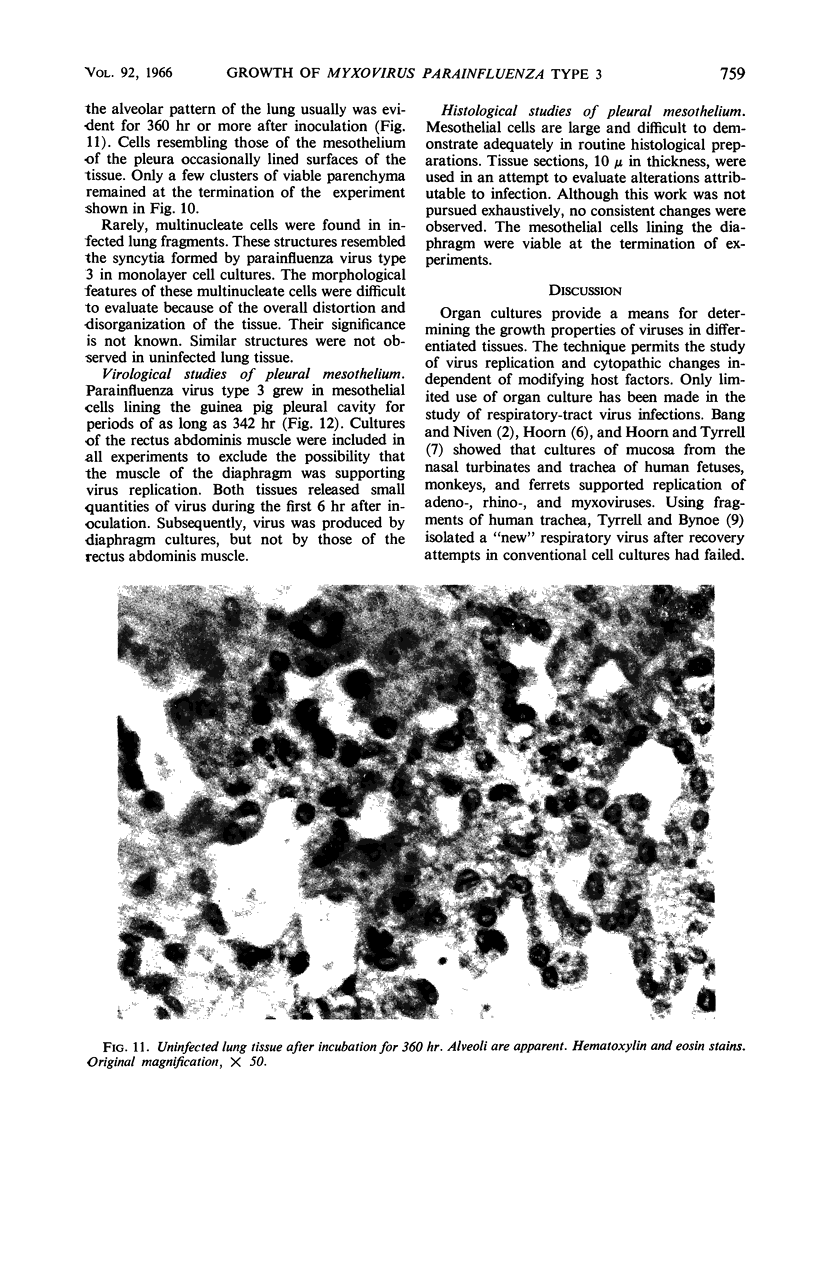
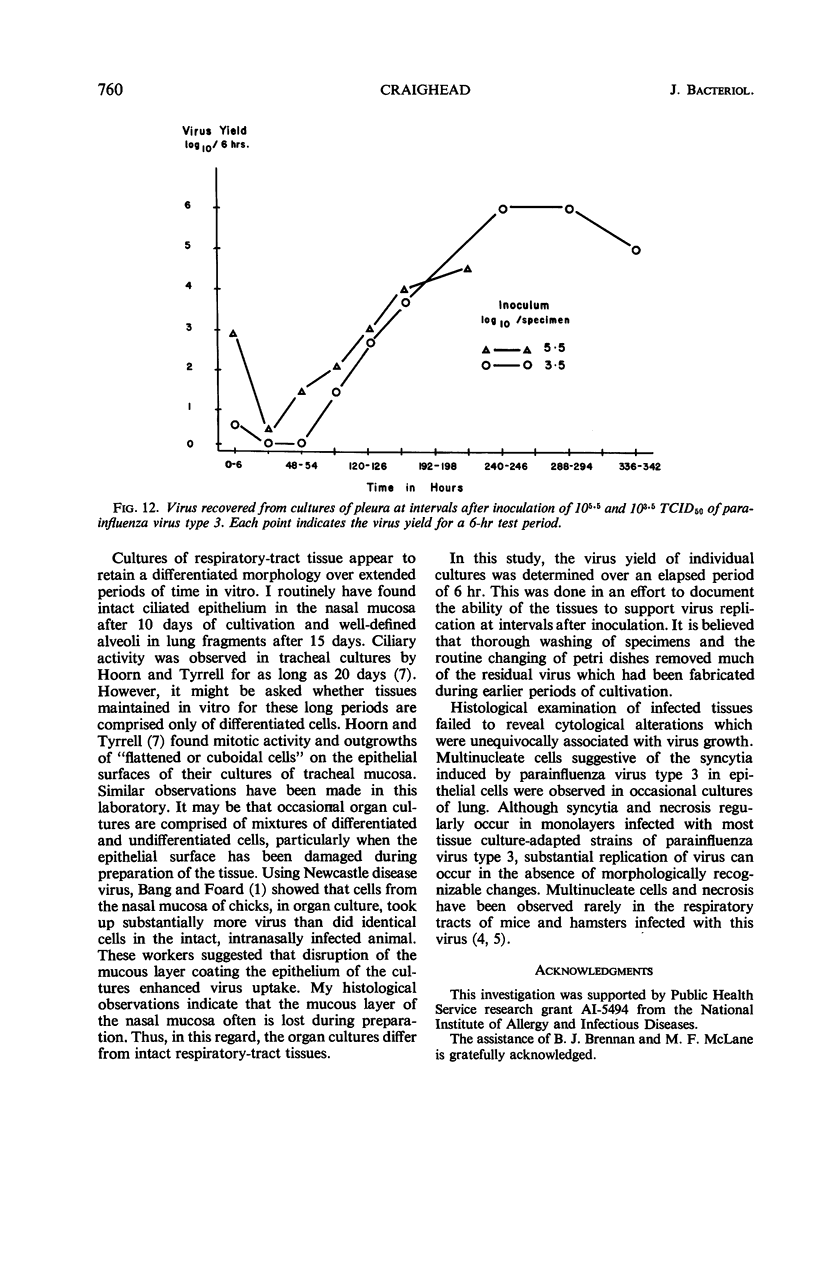
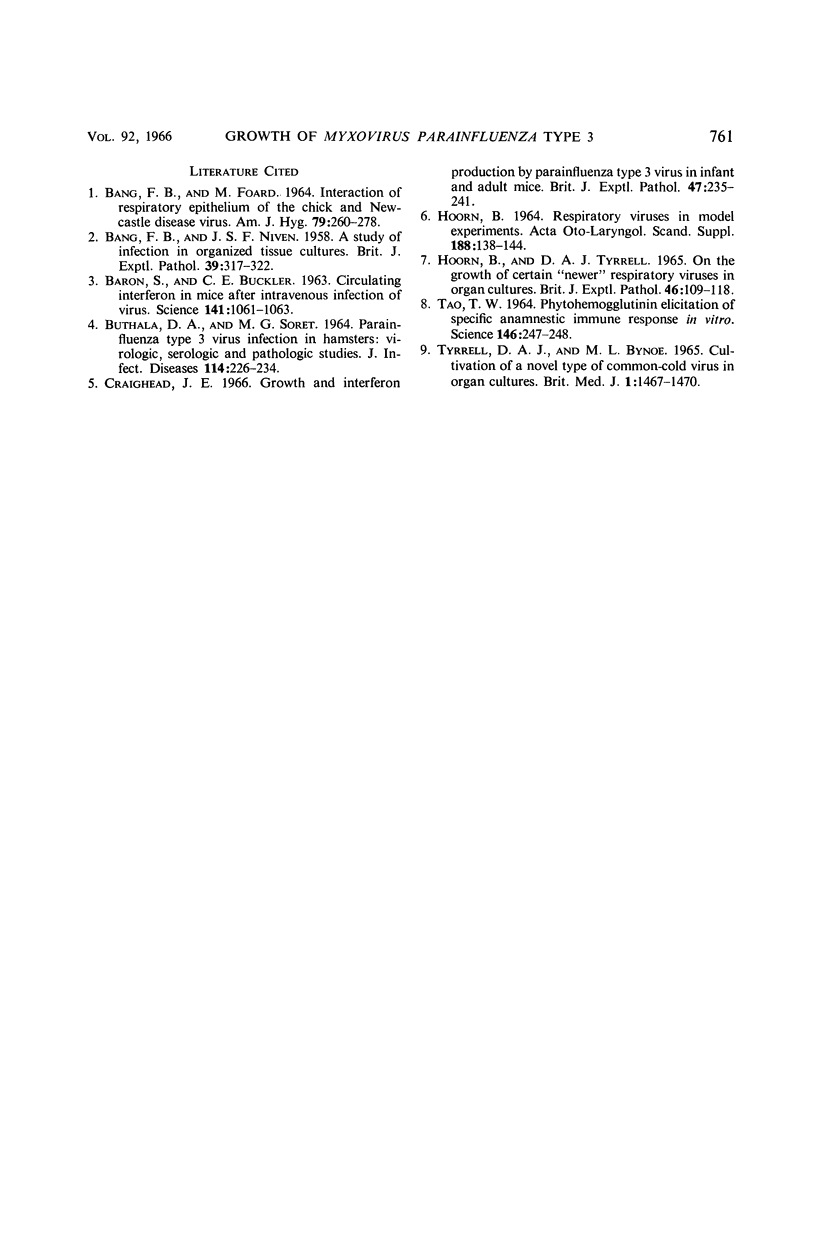
Images in this article
Selected References
These references are in PubMed. This may not be the complete list of references from this article.
- BANG F. B., FOARD M. INTERACTION OF RESPIRATORY EPITHELIUM OF THE CHICK AND NEWCASTLE DISEASE VIRUS. Am J Hyg. 1964 May;79:260–278. doi: 10.1093/oxfordjournals.aje.a120382. [DOI] [PubMed] [Google Scholar]
- BANG F. B., NIVEN J. S. A study of infection in organised tissue cultures. Br J Exp Pathol. 1958 Jun;39(3):317–322. [PMC free article] [PubMed] [Google Scholar]
- BARON S., BUCKLER C. E. CIRCULATING INTERFERON IN MICE AFTER INTRAVENOUS INJECTION OF VIRUS. Science. 1963 Sep 13;141(3585):1061–1063. doi: 10.1126/science.141.3585.1061. [DOI] [PubMed] [Google Scholar]
- BUTHALA D. A., SORET M. G. PARAINFLUENZA TYPE 3 VIRUS INFECTION IN HAMSTERS: VIROLOGIC, SEROLOGIC, AND PATHOLOGIC STUDIES. J Infect Dis. 1964 Jun;114:226–234. doi: 10.1093/infdis/114.3.226. [DOI] [PubMed] [Google Scholar]
- HOORN B. RESPIRATORY VIRUSES IN MODEL EXPERIMENTS. Acta Otolaryngol Suppl. 1964;188:SUPPL 188–188:138+. doi: 10.3109/00016486409134552. [DOI] [PubMed] [Google Scholar]
- HOORN B., TYRRELL D. A. ON THE GROWTH OF CERTAIN "NEWER" RESPIRATORY VIRUSES IN ORGAN CULTURES. Br J Exp Pathol. 1965 Apr;46:109–118. [PMC free article] [PubMed] [Google Scholar]
- TAO T. W. PHYTOHEMAGGLUTININ ELICITATION OF SPECIFIC ANAMNESTIC IMMUNE RESPONSE IN VITRO. Science. 1964 Oct 9;146(3641):247–248. doi: 10.1126/science.146.3641.247. [DOI] [PubMed] [Google Scholar]
- TYRRELL D. A., BYNOE M. L. CULTIVATION OF A NOVEL TYPE OF COMMON-COLD VIRUS IN ORGAN CULTURES. Br Med J. 1965 Jun 5;1(5448):1467–1470. doi: 10.1136/bmj.1.5448.1467. [DOI] [PMC free article] [PubMed] [Google Scholar]









